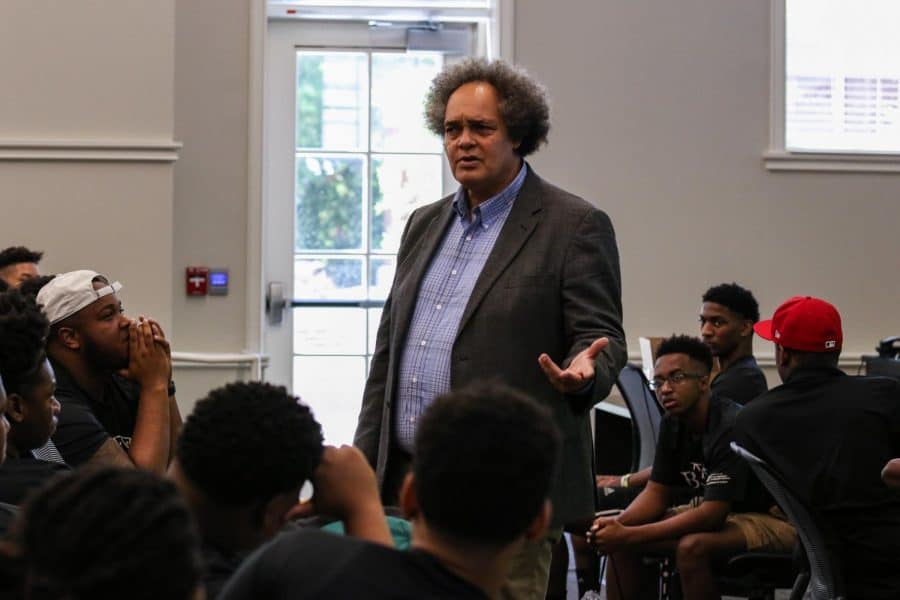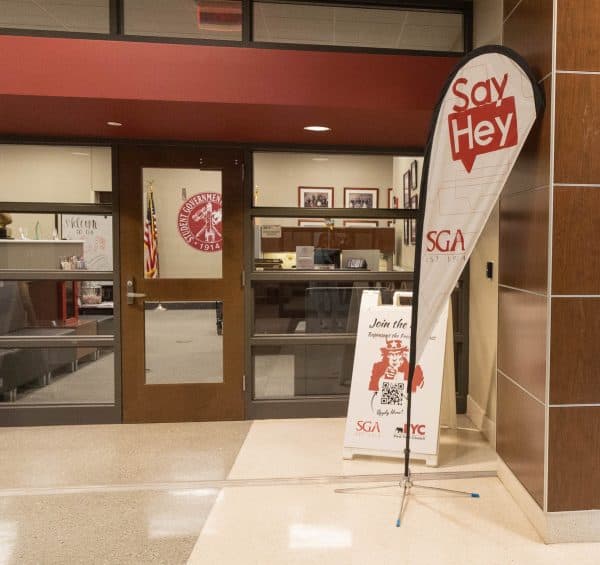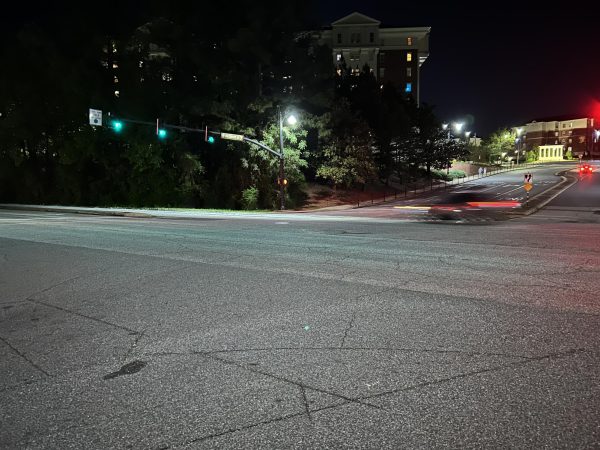FYE builds bridges with incoming male students of color
August 26, 2019
When it comes to retaining students from underrepresented groups on campus, one program has a strategy: building bridges.
With the help of a committee of faculty and staff at The University of Alabama, First Year Experience’s BRIDGE program is striving to foster a sense of community with incoming male freshmen of color while also broadening their knowledge of campus.
“BRIDGE is an extended orientation program,” said Kiara Summerville, Assistant Director of First Year Experience and Retention Initiative. “It is a three-day, two-night program that’s supposed to expand [the incoming male freshmen’s] knowledge about campus beyond the formal orientation program that they had in the summer.”
Nationally, the enrollment and graduation rates of men of color in higher education lag behind not only those of white male students but also those of women of color. According to research by the Postsecondary National Policy Institute, in 2014 only 38% of African-American students, 43% of Latino students, 40% of Native American students and 48% of Asian American and Pacific Islander (AAPI) students were men.
Summerville said throughout the program, the men go through a curriculum together that helps foster brotherhood, builds a sense of community and informs them about academic resources on campus.
“We want to make sure they are plugged in academically,” she said. “We do want them to know that it’s great going to The University of Alabama and we’re excited that they’re here, but the first priority is for them to be successful in their coursework.”
According to UA institutional data, black or African American students made up about 12% of the University’s student population in 2018, a figure that increased slightly from a steady decline over the past eight years. Conversely, the percentage of Hispanic students (4.8%) has nearly doubled since 2011.
The program had a three-day schedule full of events, including a tour of Bryant-Denny Stadium, the UA Hallowed Grounds Tour, a dinner and reception with UA alumni and a forum called “Barbershop Talk.”
“My favorite day was day two,” said Ian Ayuk, a freshman finance major who participated in the program.
Ayuk said what made day two stand out for him was the Hallowed Grounds Tour and the networking.
“Our BRIDGE Builders, the title of the mentors, had a little skit for us and basically showed us the wrong ways to network and the right ways to network,” Ayuk said. “After that, we had an alumni dinner where we had to network with them. So, not only was it practice, but then it was a live, actual lesson on how to network. I think that was one of my favorite parts.”
Summerville said the purpose of the dinner and reception with UA alumni was to not only connect them with graduates, but to show the freshmen that while they should have fun on campus, they should also be thinking years ahead about where they’re going to be when they complete their degree and what that process will look like for them.
“It all really revolved around the networking, and I think that was my favorite part because in that time period when we were going through the networking, we were able to hear from people that came before us,” said Jermarcus Lewis, a senior kinesiology major and BRIDGE Builder. “We were able to speak to them and that was huge.”
Lewis said he gained confidence seeing other successful students and mentors from backgrounds similar to his.
“It kind of took the stress off my mind of thinking could a person like me make it to where I’m trying to go,” Lewis said.
For Terrence Watts, a freshman biology major on the pre-med track, the program as a whole taught him that one should not judge a book by its cover.
“Don’t be afraid to go out and talk to people because you never know what it might lead to, may lead to a connection,” he said.
Not only was making a connection with alumni relevant to the BRIDGE program, so was making a connection with each other.
“It used to be times where I sat at lunch or dinner alone, but if we, BRIDGE participants, see each other, we’ll sit with each other,” Ayuk said. “It’s a sense of friendship, community and brotherhood we have. So, I think that is a great thing for anyone to associate themselves with.”
For Lewis, the camaraderie and support that the program provides is something he wished he had as a freshman.
“For me, my first semester on this campus as a junior was kind of pretty much alone outside of researching and stuff with professors,” said Lewis. “Now when I’m walking around campus, I’m talking to about 72 freshmen from the program.”
Lewis said that it is monumental to have an event where men of color are able to come together, be shown resources, introduced to the staff and be serious about different circumstances, but he also stressed how important it is to just enjoy each other.
“I think [the students’ connections] are the biggest takeaway for me,” Summerville said. “We do want them to learn about the resources on campus, but if they are forming a peer group here that makes them feel connected and feel like they have a sense of community at the institution, then that is the most important thing,”
She said the response to BRIDGE has been overwhelmingly positive from faculty, staff and departments on campus.
“It’s been fun leading this program and seeing how much the students got from the program,” Summerville said. “I will say that in my career this has been one of the most if not the most enjoyable experience I’ve gotten.”
Summerville also said she noticed a sustained interest in the program, something that’s important for such a new initiative.
“I also think something that is really cool is that I feel like 90% of [the participants] if not more all said that they would be interested in being a BRIDGE Builder the next year,” Summerville said. “It goes back to the point of what I said about how that relationship they built with the mentors was so important. I think that the BRIDGE Builders absolutely modeled the way, so [the participants] want to come back and be that for the class to come behind them.”
Summerville said freshmen and transfer students who may be eligible participants are already applying to the University. Because of this years’ success, organizers have already started thinking of ways they can market and recruit young men to participate in the program in August 2020.
“If you are coming to UA and want to meet other men of color, you want to meet faculty and staff and go ahead and form these relationships pretty early on before classes start, especially the peer group piece, then I think that BRIDGE will be a very, very meaningful experience for you,” Summerville said.
For those who are interested in being a part of the BRIDGE program, Summerville said FYE will be releasing information about being an August 2020 mentor in late fall.











